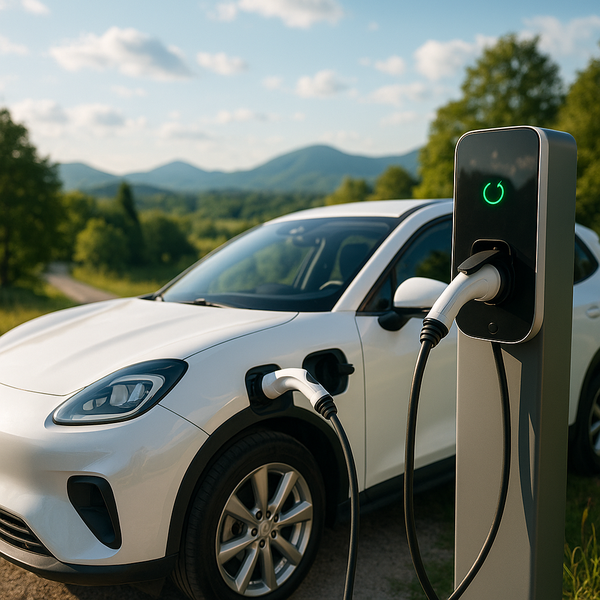
Zero emission vehicles represent a significant leap forward in transportation technology, promising a cleaner and more sustainable future for our planet. As concerns about climate change and air quality grow, the shift towards vehicles that produce no tailpipe emissions is becoming increasingly crucial for urban environments and beyond.
What Exactly Are Zero Emission Vehicles?
Zero Emission Vehicles, commonly referred to as ZEVs, are vehicles that emit no harmful pollutants from their tailpipe while operating. This primarily includes battery electric vehicles (BEVs), which run purely on electricity stored in a battery pack, and fuel cell electric vehicles (FCEVs), which use hydrogen fuel cells to generate electricity.
Unlike traditional internal combustion engine (ICE) vehicles that burn fossil fuels and release greenhouse gases and other pollutants, ZEVs offer a clean alternative. The impact of these vehicles on air quality, especially in densely populated areas, is substantial. By reducing smog-forming pollutants like nitrogen oxides (NOx) and particulate matter (PM), ZEVs contribute to healthier breathing air.
Types of Zero Emission Technologies
The most common type of ZEV today is the Battery Electric Vehicle (BEV). BEVs are powered by one or more electric motors that draw energy from a rechargeable battery pack. Charging is done by plugging the vehicle into an external power source, like a home charger or public charging station. Popular examples range from compact cars and SUVs to electric trucks and buses.
Another important category is Fuel Cell Electric Vehicles (FCEVs). These vehicles use a fuel cell stack to convert hydrogen gas and oxygen into electricity, with water being the only byproduct. FCEVs offer a longer range and faster refueling times compared to BEVs, but the hydrogen fueling infrastructure is currently less developed than electric charging networks.
While often discussed alongside ZEVs, plug-in hybrid electric vehicles (PHEVs) are not strictly ZEVs because they have an internal combustion engine and can produce emissions, even though they can travel a significant distance on electric power alone. The focus on 'zero emission' specifically targets technologies that eliminate tailpipe pollutants entirely during operation.
Benefits of Driving Zero Emission
Choosing a zero emission vehicle comes with a host of benefits. Environmentally, the reduction of tailpipe emissions is the most significant advantage, directly combating air pollution and helping to mitigate climate change by lowering greenhouse gas contributions. This is particularly impactful in urban settings where traffic congestion exacerbates air quality issues.
Economically, ZEVs can offer lower running costs. Electricity or hydrogen can be cheaper per mile than gasoline or diesel. Furthermore, ZEVs typically require less maintenance than ICE vehicles due to fewer moving parts (no oil changes, spark plugs, or complex exhaust systems). Regenerative braking also reduces wear and tear on brake pads.
Many governments offer incentives to encourage the adoption of ZEVs, such as tax credits, rebates, and exemptions from certain fees or tolls. Access to preferential parking or HOV lanes can also be an added benefit in some regions. These incentives help offset the often higher initial purchase price of ZEVs compared to comparable ICE vehicles.
Challenges and Infrastructure
Despite the compelling benefits, the widespread adoption of ZEVs faces challenges. The initial purchase price can be higher than conventional vehicles, though prices are decreasing as technology advances and production scales up. The availability and speed of charging infrastructure for BEVs and hydrogen fueling stations for FCEVs remain critical factors influencing consumer confidence and convenience.
Range anxiety, the fear of running out of charge or fuel before reaching a charging or fueling point, is another barrier. While battery technology is improving rapidly, providing longer ranges, the charging time for BEVs can still be significantly longer than refueling an ICE vehicle. Public fast-charging networks are expanding, but accessibility and reliability are still areas of focus.
Building out a robust and accessible charging and fueling infrastructure is essential for supporting a large ZEV fleet. This involves investment in public charging stations (Level 2 and DC fast chargers), workplace charging, and the necessary grid upgrades to handle increased electricity demand. For FCEVs, developing a hydrogen production and distribution network is a major undertaking.
The Future of Zero Emission Mobility
The trajectory for zero emission vehicles looks promising. Continued advancements in battery technology are expected to lead to cheaper, lighter, and more energy-dense batteries, offering longer ranges and faster charging times. Solid-state batteries, for example, are seen as a potential game-changer.
Vehicle-to-grid (V2G) technology is another exciting development, allowing ZEVs to not only draw power from the grid but also supply power back, helping to stabilize the grid and potentially offering financial benefits to vehicle owners. Autonomous driving technologies are also being integrated into ZEV platforms, further enhancing their efficiency and appeal.
As regulatory environments become stricter regarding emissions, the push towards ZEVs will likely accelerate. Increased model availability across different vehicle segments and price points will also make ZEVs more accessible to a broader consumer base. The global automotive industry is heavily investing in electric and fuel cell technology, signaling a clear commitment to a zero emission future.
The transition to zero emission vehicles is a complex but necessary journey towards a healthier planet and more sustainable transportation system. Continued innovation, investment in infrastructure, and supportive government policies will be key to overcoming challenges and realizing the full potential of zero emission mobility.

